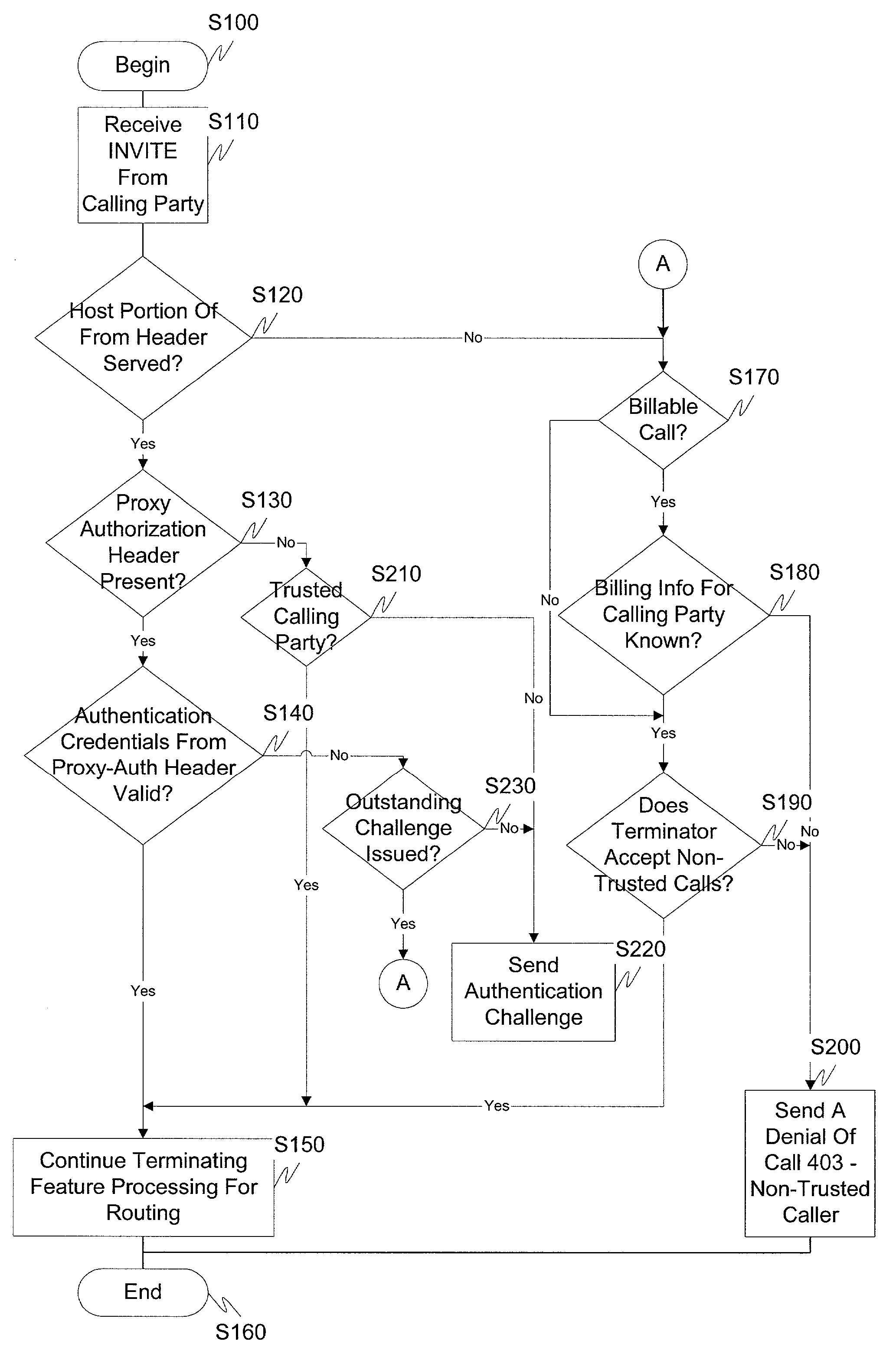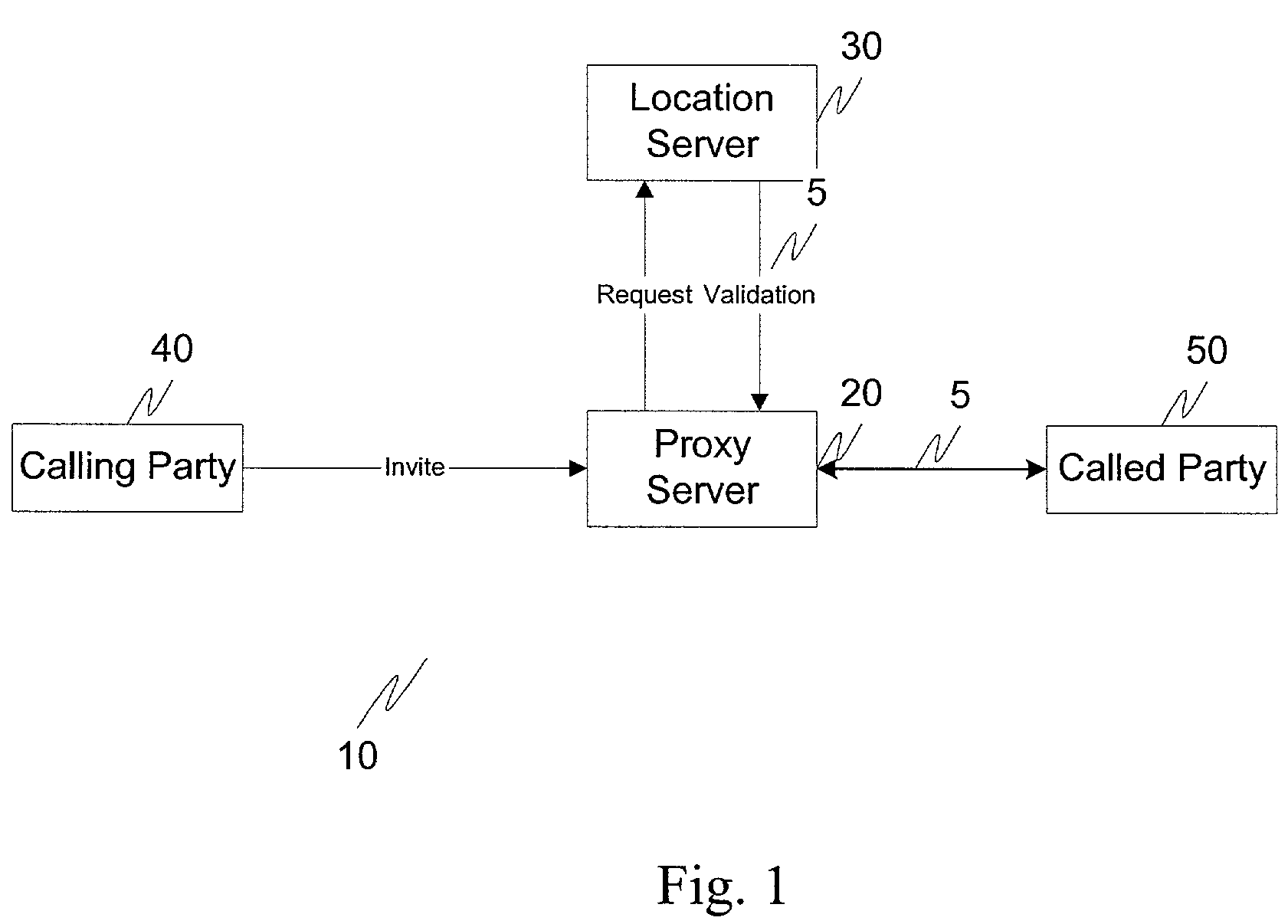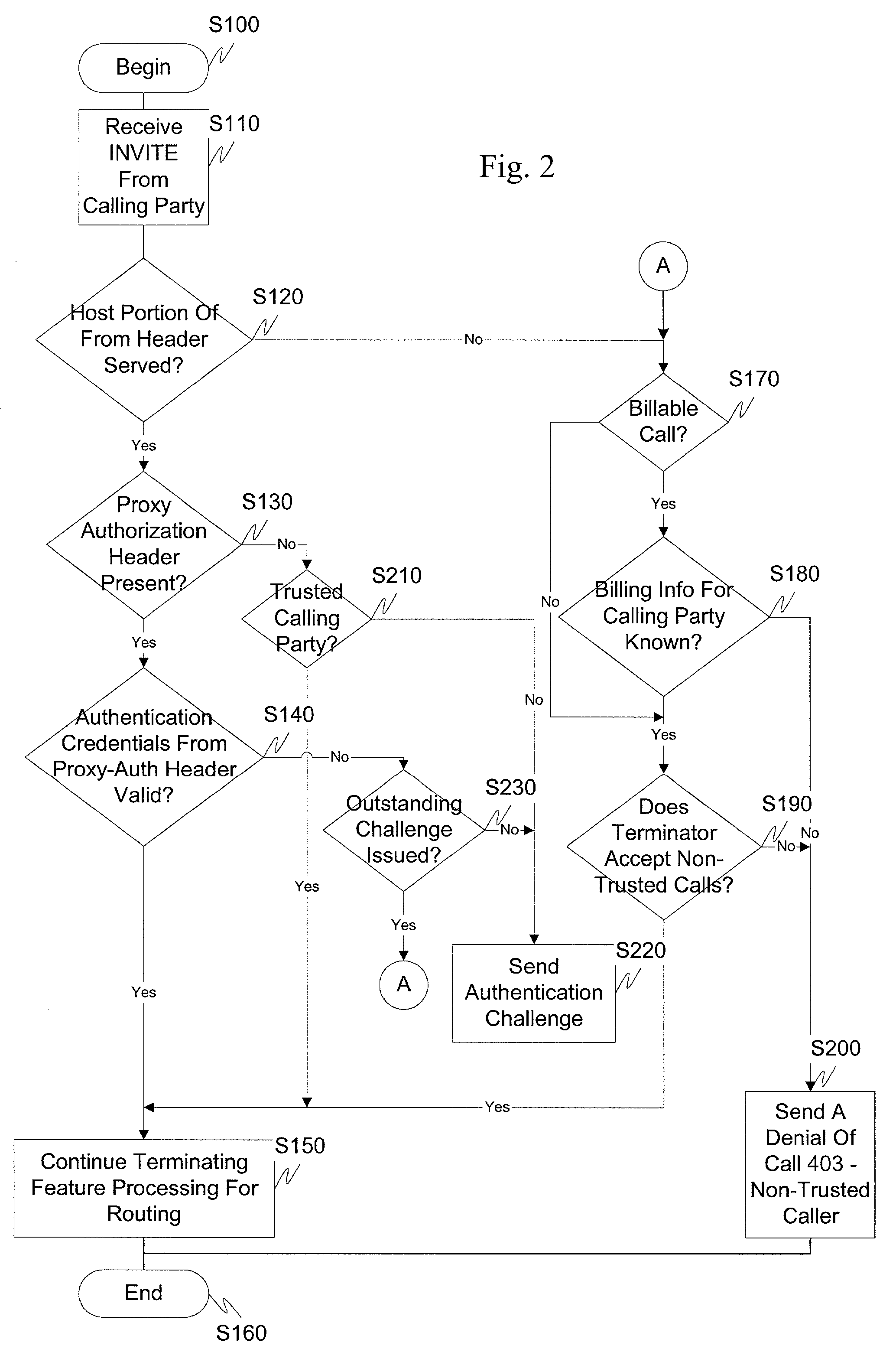Caller treatment in a SIP network
a caller and sip network technology, applied in the field of communication services, can solve the problems of complex implementation of applications, unpredictable quality and often poor quality, and users often forget which combination of keystrokes are required
- Summary
- Abstract
- Description
- Claims
- Application Information
AI Technical Summary
Benefits of technology
Problems solved by technology
Method used
Image
Examples
Embodiment Construction
[0032]The exemplary systems and methods of this invention allow the assessment and routing of non-trusted callers in a SIP network. In particular, and in accordance with an exemplary embodiment of this invention, upon receiving an invite from a calling party, a determination is made as to whether the calling party is a trusted party. If the calling party is a trusted party, the calling party is appropriately routed to a called party. Alternatively, if the calling party is not trusted party, a multi-step determination is made based on the availability of billing information and the communications network serving the calling party as to whether the call should be routed to the called party, or a denial of call returned to the calling party, i.e., the non-trusted caller.
[0033]The exemplary systems and methods of this invention will be described in relation to a Session Initiation Protocol (SIP) network. However, to avoid unnecessarily obscuring the present invention, the following desc...
PUM
 Login to View More
Login to View More Abstract
Description
Claims
Application Information
 Login to View More
Login to View More - R&D
- Intellectual Property
- Life Sciences
- Materials
- Tech Scout
- Unparalleled Data Quality
- Higher Quality Content
- 60% Fewer Hallucinations
Browse by: Latest US Patents, China's latest patents, Technical Efficacy Thesaurus, Application Domain, Technology Topic, Popular Technical Reports.
© 2025 PatSnap. All rights reserved.Legal|Privacy policy|Modern Slavery Act Transparency Statement|Sitemap|About US| Contact US: help@patsnap.com



